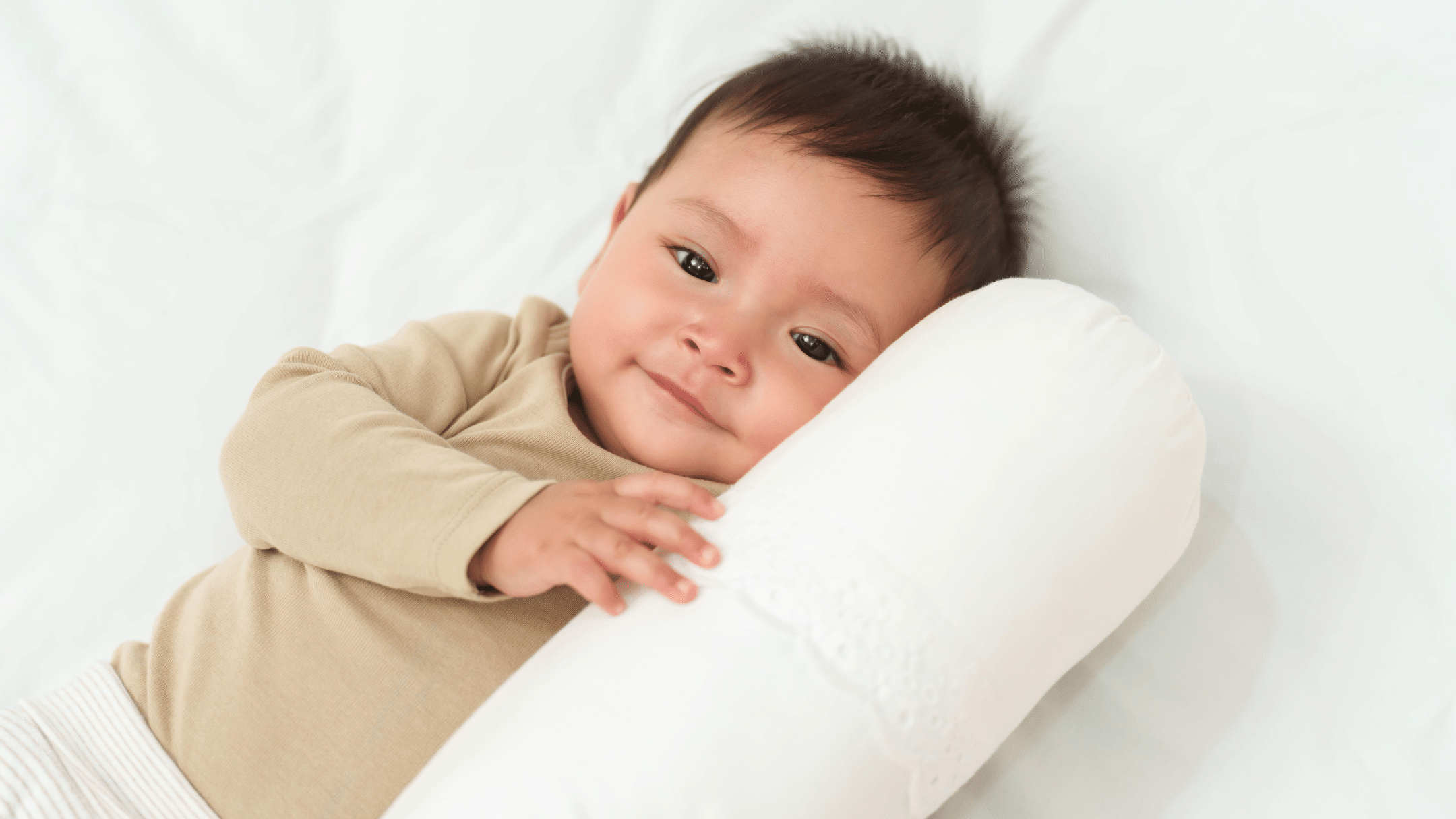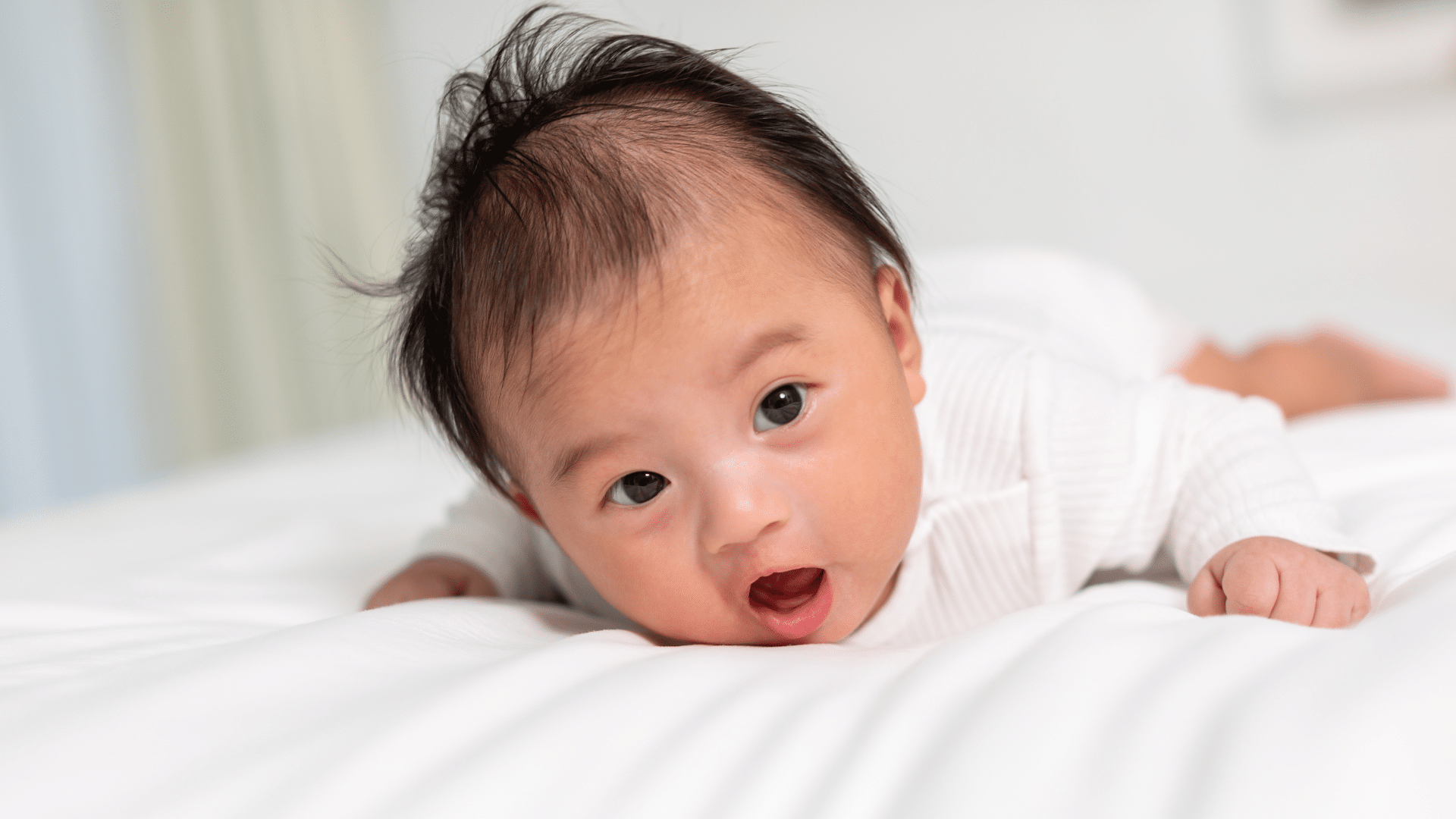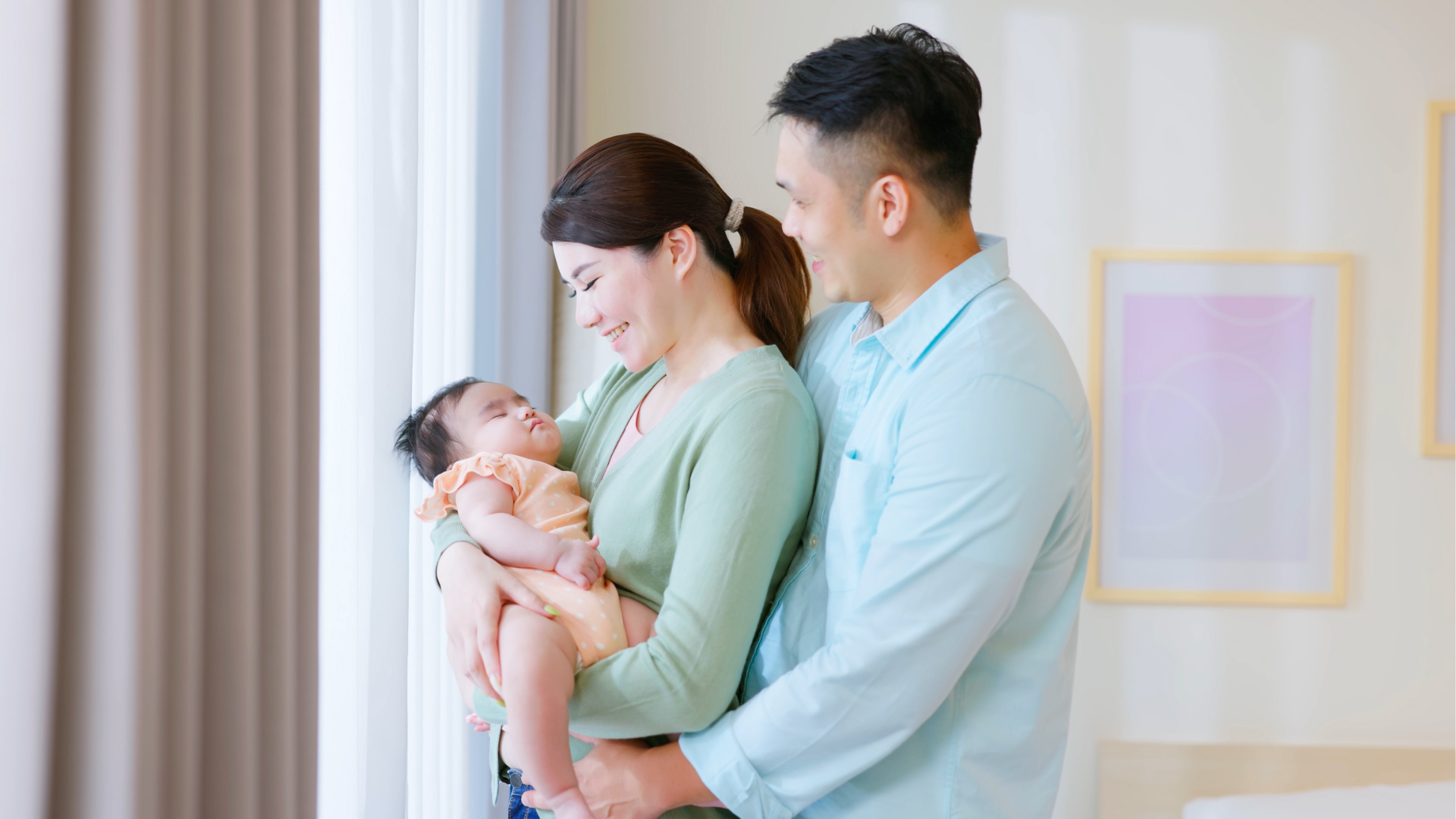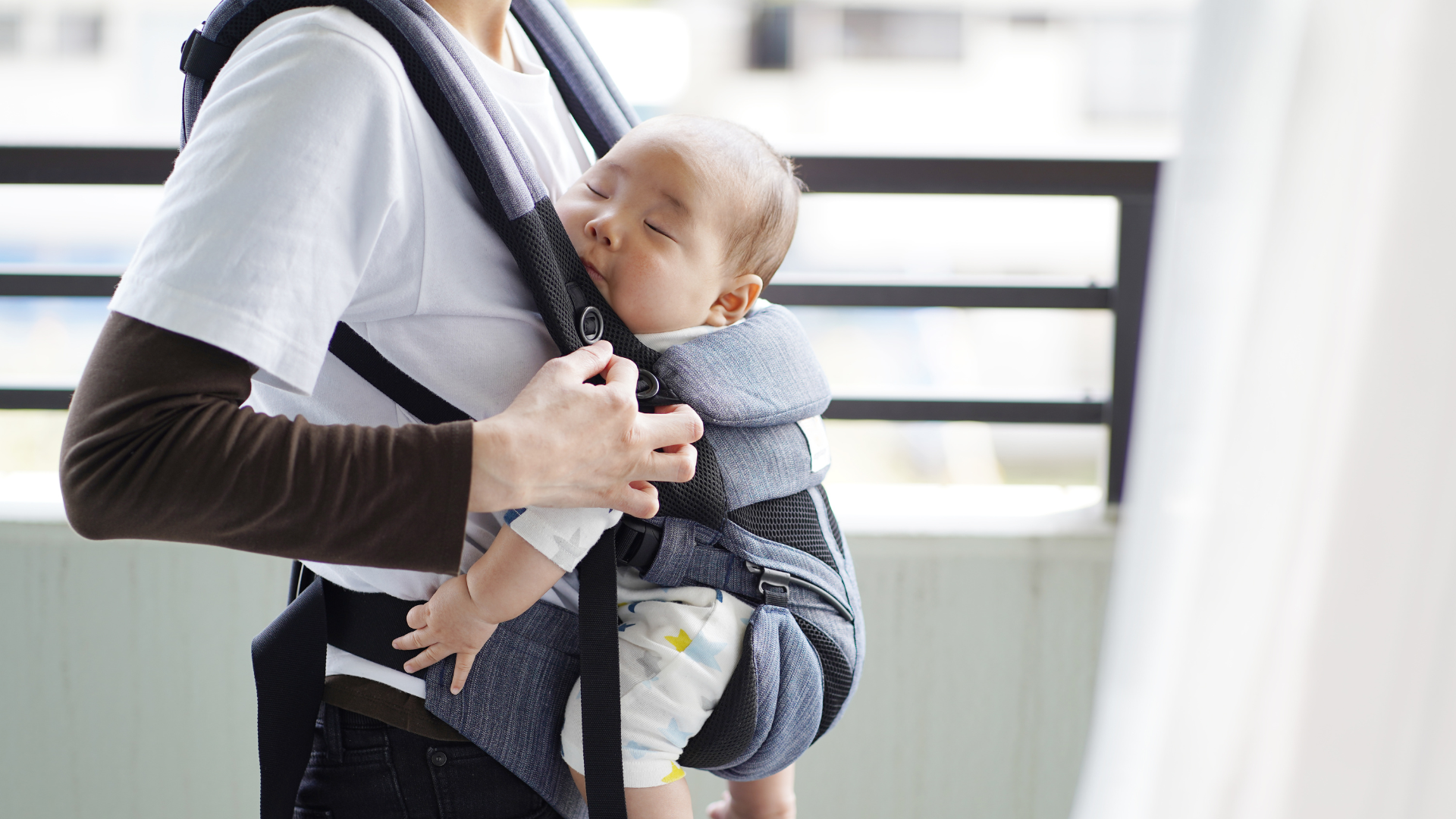Finding the right baby pillow can be confusing — especially when every brand claims to support better sleep, reduce flat spots, or promote head shaping. But before placing one under your baby’s head, it’s worth understanding when and how it’s actually safe to use.
This guide brings together expert advice from chiropractors and child-care professionals in Singapore, so you can make an informed, safety-first decision when choosing between baby safe pillows, baby bean pillows, and more.
When is it safe to introduce a baby pillow?
For most infants, no pillow should be used during unsupervised sleep until after 12 months of age. Babies have small airways and limited neck control, so even a soft pillow can pose suffocation or overheating risks.

If you wish to use a baby safe pillow earlier — such as during supervised naps or short rests — make sure it’s extremely flat, breathable, and designed specifically for infants.
Tip: Always confirm usage guidelines from your paediatrician, chiropractor, or infant-care professional before introducing any pillow under 12 months.
Key features of a baby safe pillow
A safe pillow supports your baby’s head gently without interfering with breathing or posture.
Here’s a quick guide to what makes a baby pillow safe and suitable for Singapore’s warm, humid climate:
| Baby Pillow Features | Why it matters | Ideal specification / tip |
|---|---|---|
| Loft (height) | Prevents neck strain and airway obstruction | Less than 3 cm, thin and flat |
| Breathability | Improves airflow, reduces heat build-up | 3D mesh, ventilated latex, or breathable memory foam |
| Material | Minimises allergy or rash risk | Hypoallergenic, chemical-free, OEKO-TEX Class I fabrics |
| Cover | Hygiene and maintenance | Soft cotton, removable and machine-washable |
| Shape | Promotes even pressure distribution | Gentle contour or central dip (not deep cavity) |
| Safety certification | Ensures tested standards | CE-marked or EN71-certified where applicable |
These factors are especially critical for pillows for babies under 12 months, who need maximum ventilation and minimal elevation.
Comparing popular baby pillow types in Singapore
Parents in Singapore can find everything from natural latex to memory foam and bean husk pillows.
Here’s a summary of the most common types and how they differ:
1. Natural latex pillows (e.g. BabySafe)
Made from ventilated natural latex foam, these pillows are breathable, durable, and dust-mite resistant.
However, it’s best to check the firmness before buying — some models may feel slightly heavy.
2. Memory foam pillows (e.g. Clevamama baby pillow)
These feature contoured foam that moulds to your baby’s head shape, offering gentle pressure relief and often come with a washable cover.
Do note that memory foam can retain heat, so it’s important to choose one with a breathable or airflow cover.
3. 3D mesh or spacer pillows (e.g. Mimos)
Made with a special fabric structure that allows excellent airflow and ventilation, these pillows are often certified for infant safety.
They’re highly breathable but can be pricier and require careful cleaning to maintain their shape.
4. Baby bean pillows (beansprout husk)
Filled with dried bean husks, these are naturally cooling and offer an adjustable feel.
That said, they need regular replacement and parents should check for leaks over time.
5. Cotton flat pillows
Simple and lightweight, these thin fabric-filled pillows are easy to wash and ideal for travel.
However, they provide limited support and tend to flatten quickly with frequent use.
Chiropractic tips in choosing pillows for babies under 12 months
If you’re thinking about introducing a pillow before your baby’s first birthday, it’s important to do so with great care. Babies under 12 months are still developing their neck and head control, so the priority should always be safety and healthy positioning.

Here are some essential tips to guide your choice:
- Always supervise – Use a pillow only when your baby is awake and under close supervision. Avoid using it during naps or deep sleep.
- Opt for a low-profile design – Choose a pillow that’s thin and firm rather than thick or plush to prevent the head from sinking in.
- Ensure good airflow – Look for breathable materials such as 3D mesh or ventilated latex that help regulate temperature and reduce overheating.
- Keep the sleep area minimal – Avoid adding extra bedding, soft toys, or loose blankets, which may increase the risk of suffocation.
- Inspect regularly – Check for flattening, torn seams, or loose threads that could pose hazards or reduce support.
- Consult a professional early – If you notice persistent head tilt, uneven head shape, or signs of discomfort, seek advice from a chiropractor or paediatrician.
A baby’s skull bones remain soft and flexible in the first year. Often, gentle repositioning, tummy time, and proper carrying techniques are more effective and safer than relying on any type of pillow.
Are baby bean pillows safe?
Baby bean pillows (also known as beansprout husk pillows) have long been a familiar feature in many Singaporean homes. They’re often used to help babies feel calm and secure, thanks to their soft rustling sound and naturally cooling feel.
These pillows can offer comfort — but they also require careful handling and awareness of safety guidelines.
✅ Baby bean pillow Advantages
- Made with natural, breathable fillings that help regulate temperature
- Lightweight and cooling, ideal for Singapore’s humid weather
- Often handmade and eco-friendly, using sustainable materials
⚠️ Baby bean pillow points to note
- The filling can shift unevenly, reducing support and stability
- Small husks may leak if the seams or inner lining wear out
- Not suitable for unsupervised or overnight sleep, as babies should always sleep on a firm, flat surface without loose items nearby
If you prefer using a baby bean pillow, choose one with a double inner lining, tight stitching, and smooth, intact seams. Always inspect it regularly and replace it every few months, or sooner if it loses shape or shows signs of wear.
When to stop using a baby pillow
As your child grows stronger and begins rolling, crawling, or sitting up, a baby pillow becomes less necessary. Most parents phase it out by 18–24 months, transitioning to a toddler pillow later.
Stop earlier if:
- The pillow loses firmness or flattens unevenly
- The baby frequently slides off during sleep
- Any signs of skin irritation or discomfort appear
Remember, a baby pillow is a temporary comfort aid — not a developmental requirement.
How chiropractors view baby posture and head support
At Chiropractic Singapore, our practitioners often remind parents that posture development begins from infancy.

The neck, spine, and skull alignment evolve rapidly, and how your baby spends time lying down, feeding, or being carried can affect that growth.
Chiropractors may guide parents to:
- Encourage tummy time daily to strengthen neck and shoulder muscles
- Alternate the baby’s head direction during sleep
- Observe for signs of torticollis (neck stiffness or one-sided head turning)
- Maintain proper posture during feeding and carrying
While a baby pillow can assist with comfort or gentle pressure relief, it should never replace professional assessment for head-shape or alignment concerns.
If you’re unsure whether your child’s head shape is normal or needs attention, our chiropractors can help assess posture safely and recommend positioning strategies — without reliance on devices or unverified claims.
👉 Book a baby posture assessment with our experienced chiropractors at Chiropractic Singapore to get tailored guidance for your baby’s healthy development.
Frequently Asked Questions About Baby Pillows
1. Can newborns use a baby pillow?
No. Experts strongly advise against using any type of pillow for babies under 12 months during sleep. This is because pillows can increase the risk of suffocation and Sudden Infant Death Syndrome (SIDS). Newborns should always sleep on a firm, flat surface without loose bedding or soft items.
2. Are baby bean pillows suitable for newborns?
Baby bean pillows can be used briefly during supervised awake time — for example, to calm or comfort your baby — but should never be used for naps or night-time sleep. Always ensure close supervision and keep the pillow away once the baby falls asleep.
3. What’s the safest baby pillow material?
Pillows made from natural latex or 3D mesh materials generally offer good breathability and hypoallergenic properties. Choose products with certified, non-toxic materials and avoid those with strong chemical smells, which may indicate poor-quality foam or synthetic fillers.
4. When can I switch to a toddler pillow?
Most children are ready for a toddler pillow between 18 and 24 months, typically once they transition from a cot to a bed. The pillow should be thin, firm, and appropriately sized to support their smaller frame without raising the head too high.
5. Can the right baby pillow help with a flat head?
A baby pillow may provide gentle pressure relief and help reduce mild flat spots, but it is not a cure for flat head syndrome (plagiocephaly). The most effective approach remains regular tummy time, alternating head positions, and professional advice from a chiropractor or paediatrician. If a pillow is used, ensure it’s flat, breathable, and designed for infants, and use it only during supervised awake periods — never during sleep.










